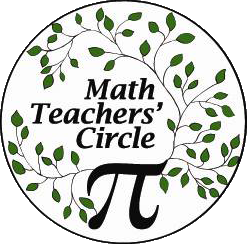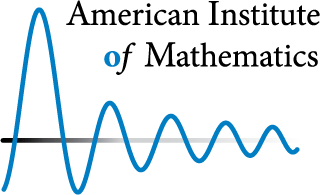
Polygons and Prejudice
Using a mathematical frame to guide a conversation about social issues.
Anne M. Ho and Tara T. Craig
Like the MTCircular? Subscribe to our free semi-annual magazine.
There is a population of Polygons consisting of Triangles and Squares. They live in a Polygon neighborhood. Polygons like having neighbors who look like them. Therefore, the Squares are happy when they have mostly Square neighbors, and the Triangles are happy living in majority-Triangle neighborhoods.

This scenario is an adaptation of the online simulation Parable of the Polygons (Vi Hart and Nicky Case, 2014), which was based on the paper Dynamic Models of Segregation by game theorist Thomas Schelling (1971). Schelling’s paper is a study of how small individual biases can lead to collective bias.
We played a board game version of “Parable of the Polygons” with the Coastal Carolina University Math Teachers’ Circle during one of our sessions this year. At the start of the session, we broke teachers into small groups, and gave each group a foam board with a preset “neighborhood” filled with happy and unhappy Triangles and Squares. We explained to the participants that the goal of the game is to make all the Polygons happy. There are three rules:
- You can only move Polygons who are unhappy with their immediate neighbors.
- Once they’re happy where they are, you can’t move them until they’re unhappy with their neighbors again.
- All Polygons believe two things: “I want to move if fewer than one third of my neighbors are like me;” and, “I want to move if I have no neighbors.
At first glance, this is simply an exercise in thinking logically and comparing fractions. For example, in the image below, the Triangle in the middle has 7 immediate neighbors. Three of these neighbors are Triangles. Since 3/7 > 1/3, the middle Triangle is happy.

On the other hand, in the next image, the middle Square is unhappy because only 1 out of 4 of its neighbors are Squares and 1/4 < 1/3.

Initially, teachers were focused on winning the game. However, all groups quickly noticed a pattern on their boards, which was that in the process of trying to win, they had segregated the Triangle and Square Polygons.
Suddenly, the game changed. “About halfway through the game I started seeing the pieces as people and not just shapes,” said teacher Sydney Logan. “I then realized I didn’t want to win anymore if the goal was segregation.”
The teachers began to explore solutions and modifications to the game that wouldn’t result in segregating the populations. What if we changed the fraction to be larger than or smaller than 1/3? What happens if we add a third shape, such as Pentagons? How might we modify the rules of the game?
While playing with modifications, several teachers came up with the idea that an alternating pattern of Triangles and Squares would make all of the Polygons happy. However, with the preset boards and original rules, achieving this pattern was next to impossible. Groups discussed different initial board setups and strategies to make diverse neighborhoods more feasible.
We finished the session with an open discussion. First, we observed how a small individual bias can lead to a larger collective bias, whether the bias is about race, gender, class, occupation, or anything else.
We talked about how the game board would have changed drastically if the Polygons additionally demanded some diversity in their neighborhoods to be happy. Specifically, there would have been more integrated neighborhoods of Triangles and Squares.
Finally, we talked about the usefulness of mathematical models. Although the simple Polygon population model ignores many socioeconomic reasons for segregation, it still gives a sense of the dynamics in a neighborhood, and it opens the door to having conversations about social issues in a math classroom.

Coastal Carolina MTC participants explore polygon neighborhoods.
After the session, we asked teachers to play with the original online simulation, which includes methods to modify the original game rules and graphs of segregation over time when a simulation is run. We also asked everyone to examine their own implicit biases through the research at Project Implicit and to utilize Teaching Tolerance’s Social Justice Standards for the classroom, which are leveled for all the stages in K-12 education and can help with curriculum development.
A math classroom is an uncommon setting in which to have conversations about segregation and bias. However, this game provided a safe and comfortable environment for some of our teachers to talk about these complex issues.
We invite you to do the same.
Resources
- Hart, Vi and Case, Nicky. Parable of the Polygons [Playable web log post].
- Schelling, Thomas (1971). Dynamic Models of Segregation. Journal of Mathematical Sociology, 1, 143-186.
- Project Implicit: Tests and research to help you examine your hidden biases.
- Social Justice Standards: a framework for anti-bias education from Teaching Tolerance, a project of the Southern Poverty Law Center.
Please email co-author Dr. Anne M. Ho for questions about running the session.
This article originally appeared in the Summer/Autumn 2017 MTCircular.

|

|
Dr. Anne M. Ho is a lecturer at The University of Tennessee and Dr. Tara T. Craig is an assistant professors of mathematics at Coastal Carolina University. They are co-founders of the Coastal Carolina MTC. |
MORE FROM THE
SUMMER/AUTUMN 2017 MTCIRCULAR
 |
A Problem Fit for a PrincessApollonian gaskets in history
|

|
What’s in a Logo?A sampling of logos from MTCs across the country
|
 |
Daydreams in MusicPatterns in musical scales
|

|
Problem PosingA framework to empower participants
|
 |
MTCs featured in KQED MindShiftKQED News reports that Math Teachers’ Circles help teachers bring a sense of wonder and discovery back to math classrooms
|

|
MTCs Advocating for Math in ESSA PlansUndertaking a collaborative effort to promote the advancement of mathematics education
|

|
Adams, Ghosh Hajra, Manes Win AwardsThree MTC leaders recognized for teaching excellence and community engagement
|
 |
A Note from AIM: #playwithmathCelebrating math as social, creative, and energizing
|
 |
Dispatches from the CirclesLocal updates from across the country
|

|
Global Math WeekComing in October!
|

